If you are sitting in a bar having an argument with friends about hearse trivia, or you just really want to know something before hiring one for a funeral, this is the right place for you.
Below are some of the more common questions about hearses that most people might be too embarrassed to ask, or simply forget about in the rush of planning a funeral.

Do hearses smell?
Hearses are usually immaculate and cleaned between each use so are very unlikely to smell of anything other than cleaning products. A hearse’s interior will not be affected by the body it is transporting and any chemical smell present isn’t formaldehyde, it’s probably a cleaning product instead.
According to those that I’ve spoken to, it’s incredibly rare for a body to ‘leak’ before burial or cremation. Although the average American will have nearly 5 gallons of formaldehyde solution used to preserve their body, many bodies are not even embalmed.
In addition, most deceased people will be refrigerated within about 30 hours or death if not sooner to help preserve them. So this means that the hearse is very unlikely to smell of corruption either.
Are hearses refrigerated?
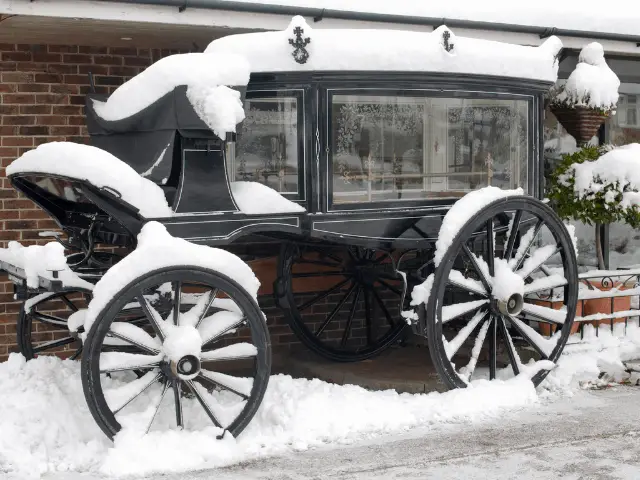
Hearses in the USA do not have a refrigeration unit in them and are not required to cool the body during transport. Remains are usually refrigerated and/or embalmed before the day of the funeral and this delays decomposition long enough to perform a burial or cremation.
Although probably a good idea most of the hearses you can buy on the market do not have any cooling units other than the internal air conditioning. There have been some patents filed for this in China, but so far no such technology has made it to the states.
In reality, it’s not necessary to cool the body while in transit as the journeys most hearses make are relatively short. The funeral home does have a legal obligation to refrigerate a body if a burial or cremation hasn’t taken place within about 30 hours of receiving the remains.
How many coffins does a hearse carry?
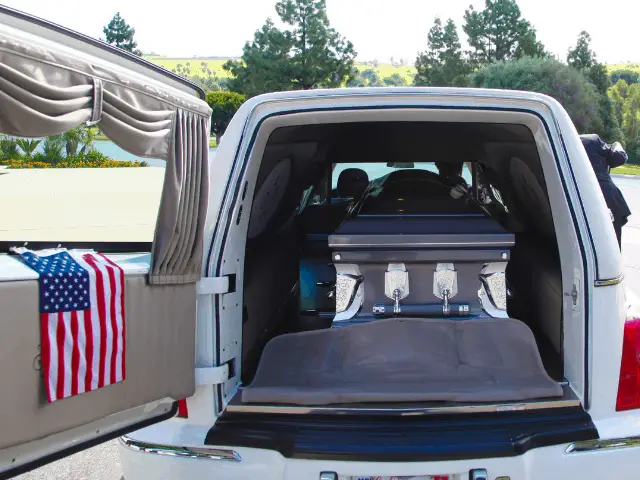
Due to the length and width of a casket, only one can fit in a hearse at one time. Funeral coaches are never called upon to collect or deliver more than one body at a time, so this extra capacity has never been designed.
Basically, if you hire a hearse you are doing so for only one body. If you had to, for any tragic reason, bury more than one person you would need additional funeral coaches.
Do hearses have sirens?
Traditionally in some states, hearses did have sirens as part of their additional services to the community, but modern-day funeral coaches do not. When transporting the deceased, hearses are required to have certain flashing lights or insignia but they will not be playing a siren while they drive.
Nowadays hearses aren’t fitted to sirens in the USA as standard. When they are driving in a funeral procession, however, in many states all vehicles are required to have flashing lights (usually purple or amber) and headlights on.
You may hear sirens, as well as many funeral processions, are escorted by police vehicles. Even when there is no official escort, these convoys still have the right to drive through red lights and stop signs in some states, so be careful around them.
Do hearses have back seats?
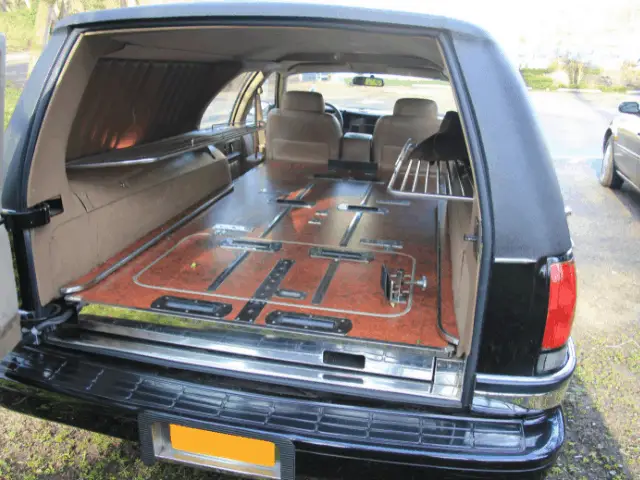
Traditional hearses only have two seats, one for the driver and one other often left unoccupied. Other vehicles, such as the Mercedes V class, can be adapted to carry a casket and up to 6 passengers and can be legally used as a funeral coach. Usually, mourners travel in separate vehicles though.
When you think of the classic hearse, probably a Cadillac, it will only seat 2 people and a casket in the back. Many private owners of classic hearses will retro-fit back seats in order to accommodate more passengers, but they don’t operate the vehicles for funerals.
Interestingly, until a request was filed hearses makers had to comply with child seat regulations until it was explained that children rarely rode in the front seat of these vehicles.
Other types of vehicles, such as the Mercedes V class can also be used to transport a casket and quite a few mourners at the same time. So, riding along with your deceased loved one to the funeral is not impossible.
Can you pass a hearse?
In many states, funeral processions are given de facto right of way, but in some states, it is illegal to overtake a hearse. The states which have legal regulations about not interfering with funeral convoys are Kentucky and Tennessee. Other state statues could be interpreted as saying the same.
Legally speaking, in most places in the United States you are not going to end up in jail for driving around a slow-moving hearse. However, you could pick up a ticket if your state or local government has written a stricter law about this, so check before you put your foot down.
Is it disrespectful to overtake a hearse?
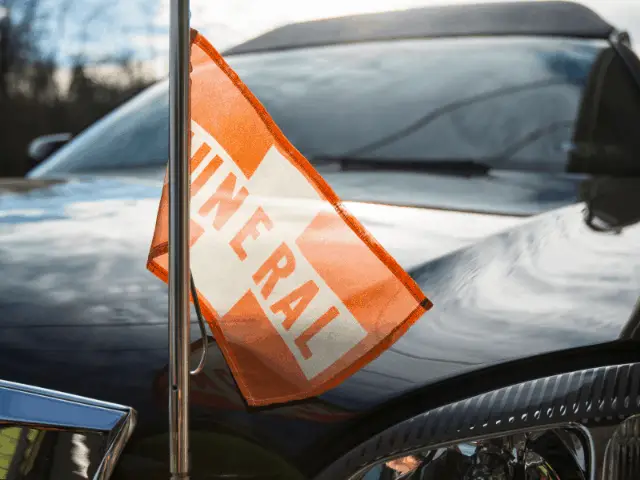
Generally speaking, overtaking a hearse or trying to pass a funeral procession in any way is definitely disrespectful. Legally speaking you may be in the right in most states, but you will still be showing disdain for the family’s grief. It’s best to be patient and allow the convoy to pass.
Nevertheless, let’s face it, funeral processions are slow and they can really disrupt traffic as in many states they have right of way and can pass through red lights as a convoy. If you have to, get off the main route and try to overtake them through the back roads.
Don’t pull out around them as you may accidentally hit an escort vehicle that has the right to exceed the speed limit in many states in the course of its duties.
Why do funeral directors walk in front of the hearse?
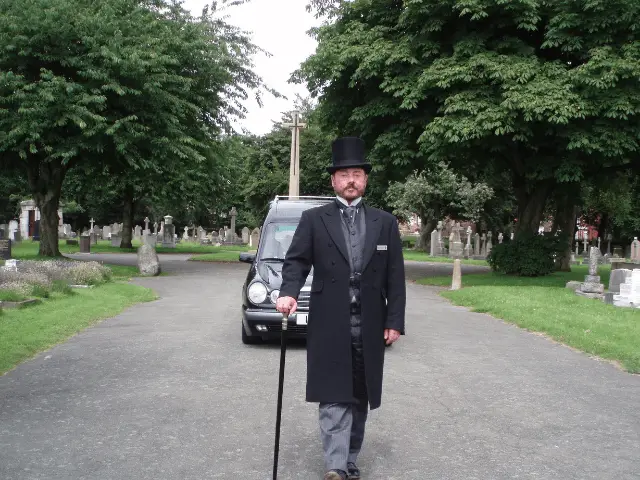
Funeral directors walk in front of hearses primarily for practical reasons such as giving directions or as they know the precise location of the grave in the cemetery. It is also done to show respect to the decedent. It’s also a tradition which harks back to the days before motorized transportation.
You will usually see a funeral director walking in front of the hearse as it leaves a funeral home for the next venue, be it a church or a cemetery. This is only done for a short distance and is apparently to give all the vehicles in the procession a chance to join it.
At a cemetery, the funeral director will walk in front of the hearse as they know where the grave is and the best route to reach it. it’s also possible that there are other obstacles and newly opened plots which the funeral director will know about. This eliminates the chance of a funeral-goer living a nightmare by falling into an open grave.
Ultimately, this is an act of respect and has become a time-honored tradition among funeral directors.
Is a hearse an emergency vehicle?
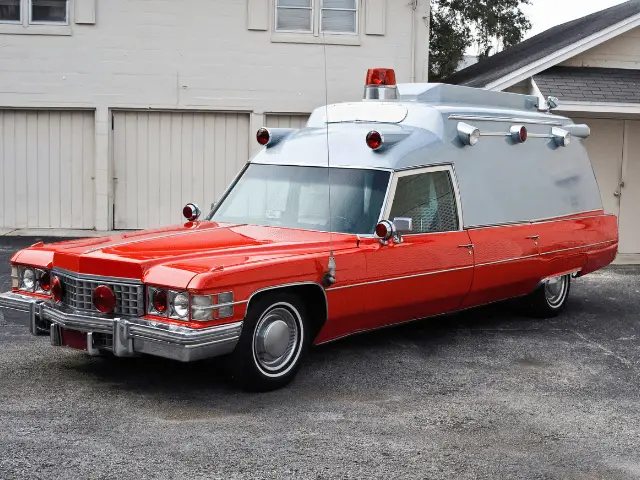
Any vehicles can be used as an ambulance in a crisis, but hearses no longer are classified as emergency vehicles. In the past, they doubled up in this role but in recent times funeral homes have focused on revenue streams that pay more.
If you buy a classic funeral coach you may find minimal ambulance equipment inside it, but they were only really used in this role in the distant past and before more familiar ambulances came into existence.




